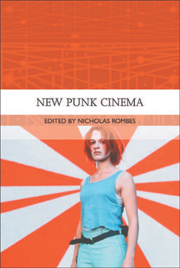3 - The French New Wave: New Again
from PART I - BACKGROUNDS AND CONTEXTS
Published online by Cambridge University Press: 05 August 2013
Summary
The great Spanish director Luis Buñuel loved his Martinis.’ Today I'm as old as the century and rarely go out at all’, he wrote in his charming autobiography, My Last Sigh, ‘but all alone, during the sacrosanct cocktail hour, in the small room where my bottles are kept, I still amuse myself by remembering the bars I've loved.’ (Buñuel 1983: 16)
Ah, yes. The bar. The cocktail. Buñuel liked to sip away in sustained quiet but there are times when juke-box music is in order. Alas, the juke-box, like the Martini, is under siege. Rare is the bar that keeps a good juke-box loaded with an idiosyncratic selection of music that reflects the owner's tastes and not some trash hit parade from the rental company.
One bar I know, perhaps too intimately, has a great machine, lodged at the back of the room. The other day I noticed a couple of new selections. One of them was Couleur Café by Serge Gainsbourg, the legendary French singer. The record is pure kitsch now but, in the early 1960s, nobody was more happening than Gainsbourg. The cover has the baggy-eyed swinger staring down the camera while a cheroot smoulders between his raised fingers. In the brothel-red background a pair of Latin gentlemen work over some bongos.
- Type
- Chapter
- Information
- New Punk Cinema , pp. 56 - 71Publisher: Edinburgh University PressPrint publication year: 2005

